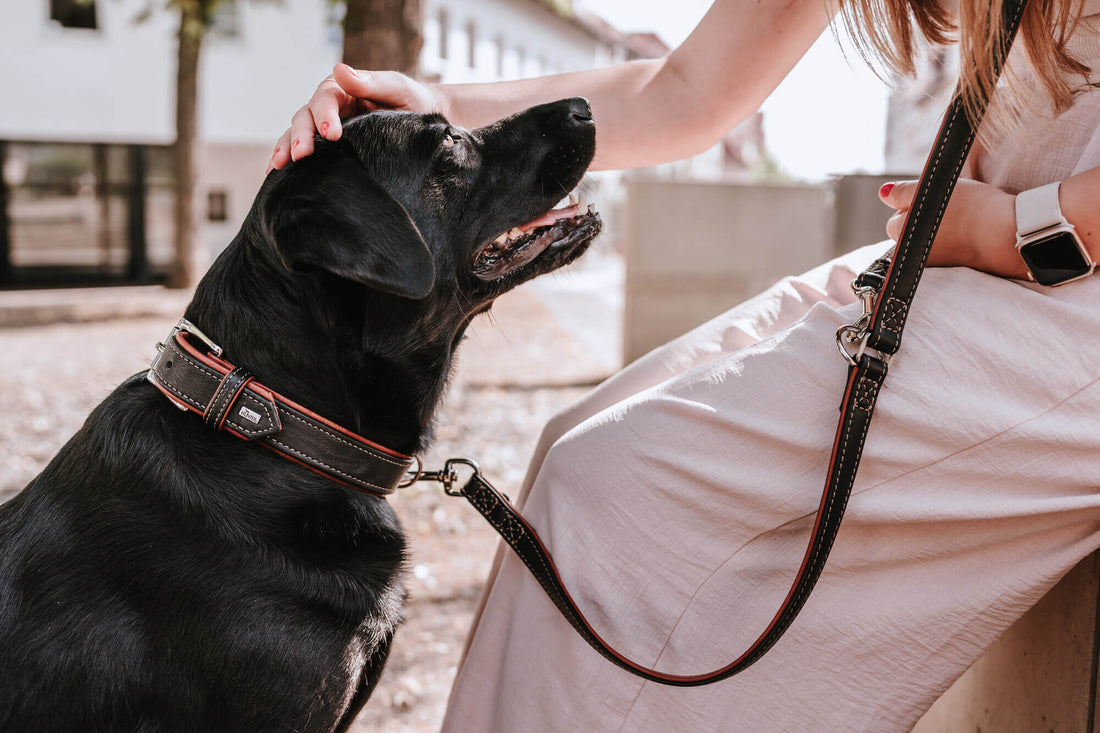
Puppy's First Collar: What to Know for a Safe Start
Share
Welcoming a new puppy into your home is an exciting journey filled with joy and responsibilities. Amongst the first items on your checklist is selecting your puppy's first collar. But what should you know to ensure your furry friends safety and comfort? This decision is more than just picking a cute accessory; it's about making a choice that aligns with your puppys health and lifestyle needs.
Choosing a collar that suits your puppys size, breed, and health needs can seem daunting. However, with the right information, you can make an informed decision that will keep your puppy safe and stylish. In this article, we will delve into the essential aspects of selecting a collar for your puppy, ensuring you are well-equipped to make the best choice.

Understanding the Importance of the Right Collar
When it comes to your puppys health, the right collar plays a crucial role. Not only does it serve as an identification tool, but it also assists in training and managing your puppy in public places. According to MayaDoro, the evolution of dog collars has seen significant advancements aimed at enhancing comfort and functionality.
Choosing the wrong collar can lead to health issues such as tracheal damage or skin irritation. Therefore, understanding the importance of selecting the right collar can prevent these issues and promote healthy development for your pup.
Steps to Choosing the Perfect First Collar
1. Prioritize Comfort and Fit
The comfort of your puppy should be your top priority when selecting a collar. A collar that's too tight can cause discomfort and even injury, while a loose one might slip off. The ideal collar should allow for two fingers to fit snugly between the collar and your puppys neck.
For detailed guidance on proper fitting, you might want to check out the repair and maintenance tips for dog collars on Petzooli.
2. Material Matters
Collars are made from various materials, each with its pros and cons. Common materials include nylon, leather, and polyester. Nylon collars are lightweight and durable, making them ideal for active puppies. Leather collars, while more expensive, offer durability and a classic look.
Consider your puppys lifestyle and any allergies they might have when selecting a material. Nylon, for instance, is often preferred for puppies that are frequently exposed to water due to its quick-drying properties.
3. Style and Functionality
While style might seem secondary, its important to choose a collar that suits your puppys personality. Options range from simple designs to those with embellishments. Consider collars with reflective strips for added safety during night walks.
Explore a variety of themed collars to find one that best suits your puppys playful nature.
Training with Your Puppys First Collar
Introducing your puppy to their first collar is also an excellent opportunity to begin basic training. Collars can be used in conjunction with leashes to teach your puppy how to walk properly on a lead.
For more advanced training techniques, consider enrolling in obedience classes or utilizing expert tips on managing common puppy behaviors. The right collar can significantly aid in training and correcting unwanted behaviors.
Health Considerations and Safety Tips
Health-conscious pet owners should be aware of potential hazards that come with collar use. Regularly check for signs of wear and tear, and replace the collar as needed. Additionally, monitor your puppy for any signs of discomfort or allergic reactions.
Avoid common mistakes such as using collars as a substitute for supervision. For more insights on common pet care mistakes, visit this informative guide.

Frequently Asked Questions
1. When should I start using a collar for my puppy?
It is generally recommended to introduce a collar at around 8 weeks of age, once your puppy is comfortable in their new home.
2. How often should I check the fit of my puppys collar?
Check your puppys collar fit weekly, as puppies grow quickly, and an ill-fitting collar can cause discomfort.
3. What should I do if my puppy is allergic to their collar material?
If you notice signs of an allergic reaction, such as itching or redness, try switching to a hypoallergenic material and consult your veterinarian.
Starting your puppys journey with the right collar sets the foundation for a healthy and happy life. By understanding the critical elements of selecting and maintaining a collar, you ensure your puppys safety and well-being. For more tips on enhancing your pet care skills, visit this resource.
This article contains affiliate links. We may earn a commission at no extra cost to you.
